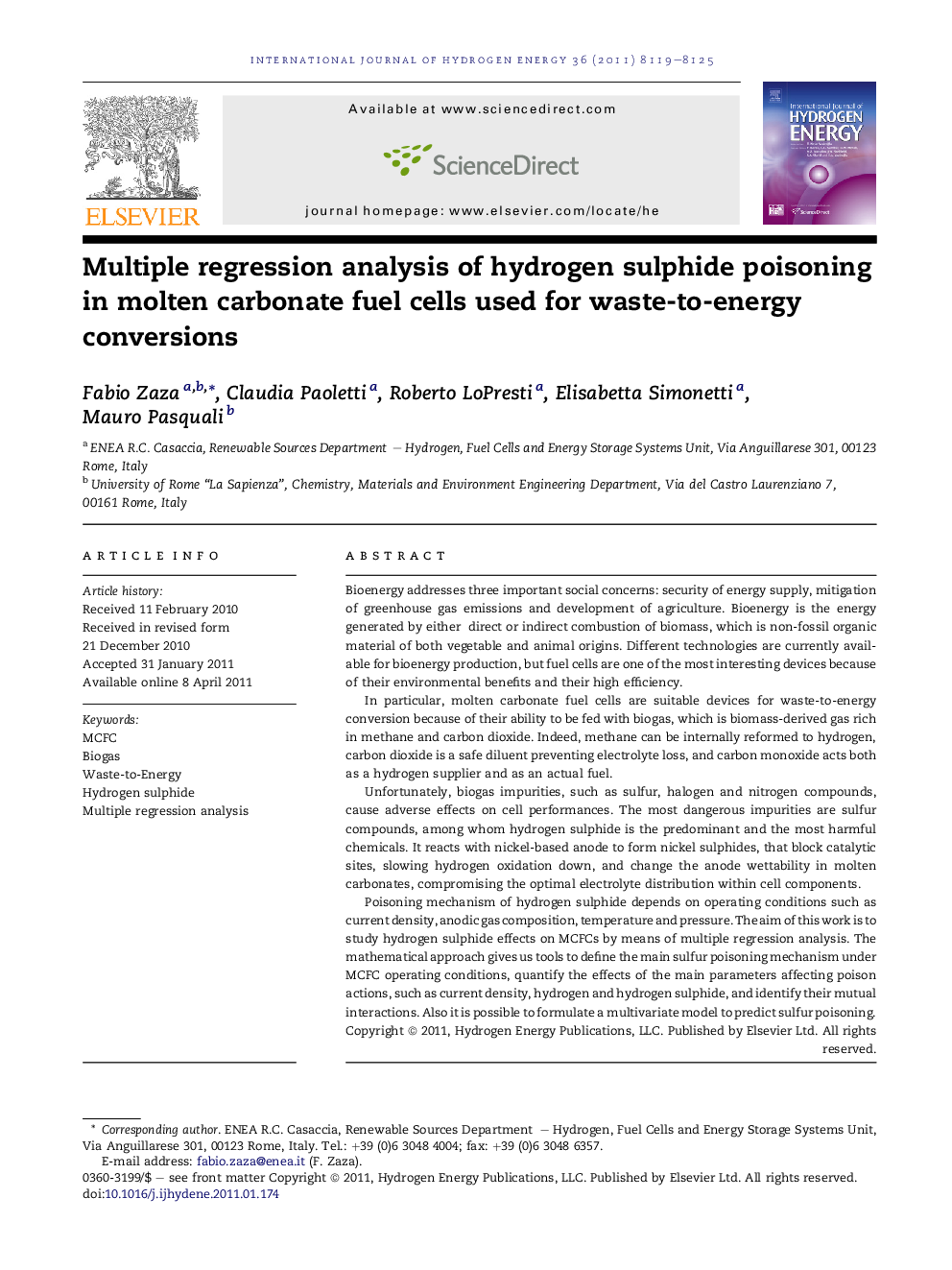| Article ID | Journal | Published Year | Pages | File Type |
|---|---|---|---|---|
| 1279358 | International Journal of Hydrogen Energy | 2011 | 7 Pages |
Bioenergy addresses three important social concerns: security of energy supply, mitigation of greenhouse gas emissions and development of agriculture. Bioenergy is the energy generated by either direct or indirect combustion of biomass, which is non-fossil organic material of both vegetable and animal origins. Different technologies are currently available for bioenergy production, but fuel cells are one of the most interesting devices because of their environmental benefits and their high efficiency.In particular, molten carbonate fuel cells are suitable devices for waste-to-energy conversion because of their ability to be fed with biogas, which is biomass-derived gas rich in methane and carbon dioxide. Indeed, methane can be internally reformed to hydrogen, carbon dioxide is a safe diluent preventing electrolyte loss, and carbon monoxide acts both as a hydrogen supplier and as an actual fuel.Unfortunately, biogas impurities, such as sulfur, halogen and nitrogen compounds, cause adverse effects on cell performances. The most dangerous impurities are sulfur compounds, among whom hydrogen sulphide is the predominant and the most harmful chemicals. It reacts with nickel-based anode to form nickel sulphides, that block catalytic sites, slowing hydrogen oxidation down, and change the anode wettability in molten carbonates, compromising the optimal electrolyte distribution within cell components.Poisoning mechanism of hydrogen sulphide depends on operating conditions such as current density, anodic gas composition, temperature and pressure. The aim of this work is to study hydrogen sulphide effects on MCFCs by means of multiple regression analysis. The mathematical approach gives us tools to define the main sulfur poisoning mechanism under MCFC operating conditions, quantify the effects of the main parameters affecting poison actions, such as current density, hydrogen and hydrogen sulphide, and identify their mutual interactions. Also it is possible to formulate a multivariate model to predict sulfur poisoning.
